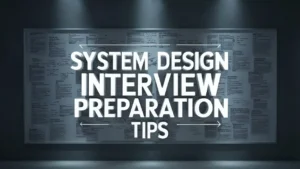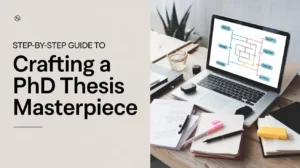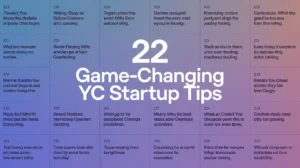In today’s fast-paced world, sharpening your analytical thinking skills is crucial for making better decisions, solving complex problems, and boosting your personal and professional growth. If you’ve ever struggled to approach challenges strategically or felt overwhelmed by decision-making, you’re in the right place! Here are 20 proven techniques that will help you think critically, solve problems smarter, and boost your productivity. Let’s dive in! 🚀
20 Powerful Techniques to Sharpen Your Analytical Thinking
1. Use the 80/20 Rule (Pareto Principle) 🔢
💡 Tip: Focus on the 20% of tasks that lead to 80% of your results.
Example:
If you’re a business owner, identify which customers bring in the most revenue. Instead of spreading yourself too thin, double down on serving them better! This small adjustment can lead to major results.
2. Master the Feynman Technique 🎓
Teach to learn! The Feynman Technique helps you simplify complex concepts by teaching them to others. It reveals gaps in your understanding, forcing you to revisit and simplify them.
🗣 Use case: Got a tricky concept in physics? Try explaining it to a 10-year-old. If you can make it clear and concise, you’ve mastered it!
3. Avoid Self-Deception 🚫
“You must not fool yourself, and you are the easiest person to fool.”—Richard Feynman
It’s easy to believe what we want to be true. Always question your own biases and seek out facts. Don’t be your own worst critic.
4. Ask "Why?" 5 Times ❓❓❓
The 5 Whys Technique helps you dig into the root cause of any problem. Keep asking “Why?” until you’ve uncovered the deeper issue behind the symptoms.
Example:
A sales team is struggling. Ask “Why?” repeatedly until you find that unclear product messaging, not sales technique, is the issue. Fixing the messaging solves the underlying problem!
5. Eat the Elephant 🐘 (One Bite at a Time)
Break large, overwhelming problems into smaller, manageable chunks. This strategy turns big tasks into bite-sized goals you can tackle step by step.
📝 Pro tip: When launching a project, start by creating smaller milestones. Celebrate each step as you progress!
6. Apply Second-Order Thinking 🧠
Think beyond the immediate outcome. Ask, “What happens next?” This helps you understand the long-term effects of decisions.
Example:
A company lowers prices to attract customers. Second-order thinking helps them foresee potential downsides, such as reduced profit margins or quality issues due to cost-cutting.
7. Have "Strong Beliefs, Loosely Held" 🔄
💡 Be flexible. It’s great to have strong beliefs but be ready to change them when presented with new evidence.
8. Study Cognitive Biases 🧠🔍
Learn about common cognitive biases like confirmation bias, anchoring, or the Dunning-Kruger effect. Recognizing these mental shortcuts helps you make more rational decisions.
🧠 Use case:
When making hiring decisions, cognitive biases can influence your judgment. Being aware of them helps ensure you’re choosing the best candidate based on merit, not unconscious biases.
9. Engage with Diverse Perspectives 👥
Surround yourself with people who challenge your thinking. Different viewpoints force you to re-evaluate your assumptions, making your thinking stronger and more robust.
👥 Pro tip: Find a mentor with a different background or regularly attend events where you’re the least experienced in the room. Growth happens in discomfort!
10. Use Occam's Razor 🪒
🔍 When presented with multiple solutions, go for the simplest one that fits the facts. This keeps you from over-complicating problems.
Example:
If your laptop won’t turn on, the simplest explanation might be that the battery is dead, not that there’s a complex hardware issue. Start by checking the battery first!
11. Be Data-Driven 📊
“What gets measured, gets managed.” Let data guide your decisions, not opinions or gut feelings. This approach leads to more reliable outcomes and better analytical thinking.
Example:
If you want to improve website traffic, look at analytics to see which content performs best and double down on that—don’t just rely on what feels right.
12. Factor in Nuances ⚖️
“Not everything that counts can be counted.” —Albert Einstein
Some decisions require looking at qualitative data, like team morale or creativity, which aren’t easily measurable but are equally critical.
13. Invert Problems 🔄
Instead of just thinking about how to achieve success, think about how to avoid failure. Often, removing roadblocks leads to success faster than striving for perfection.
Example:
If you’re trying to lose weight, instead of focusing only on what healthy foods to add, think about which unhealthy habits you should eliminate first.
14. Practice Morning Journaling 📓
Writing regularly helps clarify your thoughts and sharpen your analysis. Morning journaling allows you to reflect on your day, think strategically, and organize your thoughts.
15. Build a 'Second Brain' with Tools like Notion 💻

16. Adopt Probabilistic Thinking 🎲
Decisions aren’t just about right or wrong—they’re about likelihoods and risks. Probabilistic thinking helps you weigh the outcomes based on probability rather than certainty.
Example:
Instead of assuming a business venture will succeed 100%, ask, “What are the chances this will work? What’s the risk if it doesn’t?”
17. Understand Opportunity Cost 💸
Whenever you choose one option, you’re giving up something else. Opportunity cost is the value of the next best alternative you didn’t choose. Always consider what you’re sacrificing when making decisions.
18. Practice Steel Manning 🛡
Instead of attacking a weak version of an opposing argument, steelman your opponent’s position by arguing against the strongest version. This not only strengthens your argument but also makes the discussion more productive.
Example:
In a climate change debate, counter the most scientific and well-reasoned sceptic arguments, not their weakest points. Kes your position stronger.
19. Master Compounding 📈
Focus on small, incremental improvements. Just a 1% daily improvement can lead to 37x growth in a year. Start small, but stay consistent—the results will amaze you!
Example:
If you want to get in shape, start by exercising for 10 minutes each day. Over time, that small effort compounds into huge gains in fitness.
20. Beware of the Illusion of Knowledge 🔍
“The greatest enemy of knowledge is not ignorance, it is the illusion of knowledge.” —Stephen Hawking
Stay humble and be willing to admit what you don’t know. Continuous learning is the key to true wisdom.
Final Thoughts 🌟
Improving your analytical thinking is not an overnight process, but with consistent practice, you can become a more strategic thinker and a better decision-maker. By applying these 20 powerful techniques, you’ll boost your ability to solve problems, think critically, improve your analytical thinking and achieve greater success in both your personal and professional life.

















